Proliferation of Media and Credibility Crisis
Total Views |
IPF Webinar
on
Proliferation of Media and Credibility Crisis
July 24, 2021
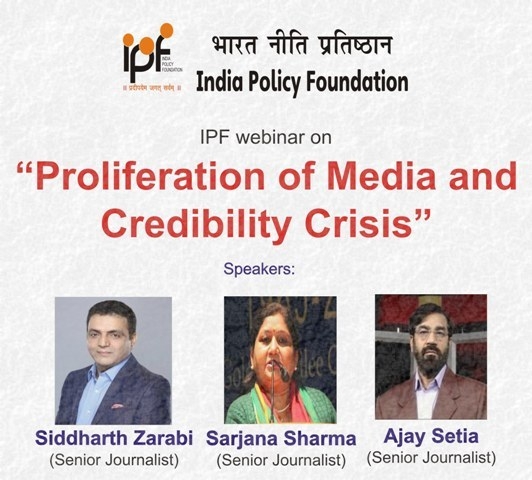
Speakers:
Siddharth Zarabi (Senior Journalist)
Sarjana Sharma (Senior Journalist)
Ajay Setia (Senior Journalist)
Moderator:
Dr Kuldeep Ratnoo, Director, India Policy Foundation
Edited transcripts of the webinar:
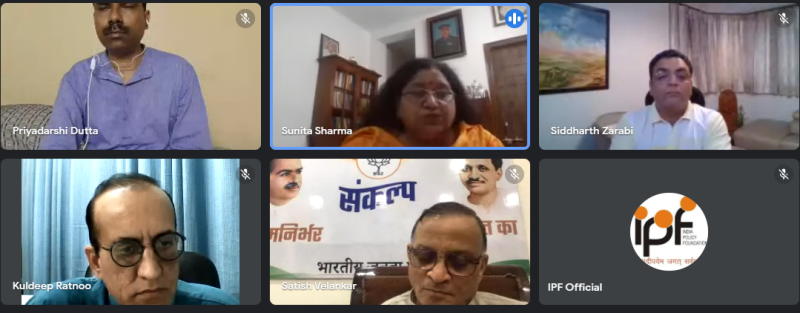
Dr Kuldeep Ratnoo:
Namaskar!! On behalf of India Policy Foundation, I welcome you all to today’s webinar. I also welcome all the three speakers.
Shri Siddharth Zarabi is a senior journalist and editor. He has worked for many prominent media groups and is currently managing editor of a leading business news channel. Smt. Sarjana Sharma is also a very senior journalist, having decades of experience in newspapers and TV news channels. Shri Ajay Setia is a renowned journalist and columnist. He has also worked as editor for prominent media groups.
Topic of today’s webinar is: “Proliferation of Media and Credibility Crisis”. There was a time when only one or two newspapers used to be available in a city. Then there was an increase in the number of newspapers. After that came Doordarshan, and then the era of news channels. And now with the advent of digital technology, there are many YouTube news channels as well as news aggregators. So, at the personal, social and corporate levels, there has been an extended reach of media. In the present times, even one person can reach many people through his/her video/audio channel. Technology has played a major role in the evolution of media. But this has also brought with it many challenges which will form the core of today’s discussion.
I request Siddharthji to share his views on the growth of media focussing on the role of foreign investments and the challenges faced by the industry.
Siddharth Zarabi:
Thank you Kuldeepji!
Today’s topic is pertinent and also timely because of the ongoing debates and discussions on the rules and regulations of media by the Central government. All types of communication, including media, come under the Union List and formulation of policy measures remains a work in progress.
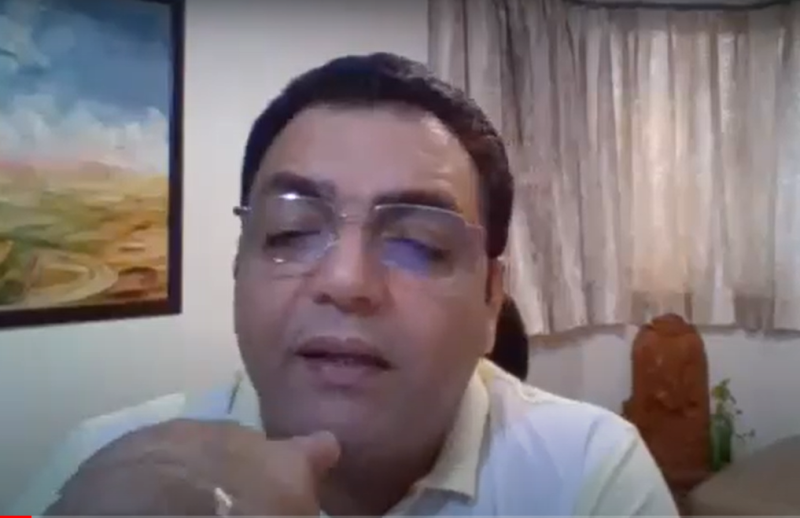
The main issue with the media industry is that today everybody is a journalist. Around ten years ago, the organisation that I was working with had a very popular programme called ‘Citizen Journalist.’ Citizen journalist was an initiative to bring to light issues faced by the common people in a country as vast as India. It was impossible for any media organisation to report on so many issues which were happening at every nook and corner of the nation. After the Dotcom revolution and its eventual failure, there came the interplay of digital technology and media which is popularly known as tech media. This led to the universalisation of citizen journalism through various channels like Twitter, Facebook, YouTube, Instagram, Snapchat etc. The platforms are irrelevant here and the logic needs to be understood.
There have not been many changes in the laws and regulations of the media sector in the last 30 years, since liberalisation of Indian economy. Media is the least reformed sector in the country. During the time of Vajpayee government, one of the largest newspapers in the world, Financial Times wanted to enter the Indian market. The government had received proposals from foreign investors interested to make huge investments in the electronic media sector. At that time, Australia’s Karry Pecker had tied up with an Indian firm and had planned to invest USD 600 million which was a huge amount at that time. But due to some reasons, India did not think of coming up with the regulatory structure for FDI in Indian media.
From 2010, social media began to spread throughout the world. It started in America but soon spread to India as the policy makers who were at the helm always felt comfortable in English language and a natural alliance was created. The traditional media players thought that the social media platforms would be complementary to their activities but soon they realised it wasn’t so. The multinational social media platforms quickly understood the market and started offering services and content in Indian languages. The end result is that today the biggest content creator in YouTube happens to be T-Series, an Indian company. For Facebook, the biggest market outside America happens to be India. Gmail is also dominant in India. Facebook, YouTube, Twitter, Instagram, all have concentrated on different market segments. For example, YouTube is the world’s biggest library of all types of content from knowledge to entertainment with 30 crore Indians logging in at least once a day, Facebook is the largest platform for information exchange and interaction with 35 crore Indians logging in at least once a day and Twitter is used by 4 crore Indians daily.
Due to this interaction and ease of communication, the entire digital media market of India went into the hands of foreign companies. This resulted in a number of consequences. The first one was seen around five years ago. At that time, India used to spend around Rs 6000 crore per year on digital advertising. Almost all of that digital advertising revenue in India went into foreign hands. This is important as our media regulations did not allow foreign investments to come through proper channels. So, content was smuggled through social media and the people of India were used for data mining, while the foreign companies reaped the benefits. There has been continuous increase in this trend because of which the livelihoods of people associated with the Indian media industry are getting affected. People who understand our country, our culture, our problems, like our editors, journalists, columnists, media promoters, etc lost their livelihoods and business to foreign platforms. Not only those, but even other media jobs like cameramen, cartoonists, designers and graphic artists were also lost due to shifting of advertising revenue to foreign social media platforms. We regularly hear about job losses in the media industry, and closure of media ventures.
It is important to understand that today the power of Indian media is in the hands of foreign companies. The whole controversy surrounding Twitter is also about who will control the content and who is answerable? That answer is yet to be found. I am not targeting any platform here. But it is a matter concerning policy. People can ask questions to journalists like me, or to Indian media companies, but not to foreign platforms. We are answerable, but they are not. Today, 85 per cent of the news that is consumed in the country is through digital medium which essentially means news is now accessed through mobile phone handsets. Of every 100 news items which are consumed in India, as many as 85 are consumed on social media. It we add WhatsApp to this, the percentage will be even more. And, more than 70 per cent of the news are consumed through social media platforms. So, the Indian news media consumer is now in the grip of a certain kind of social media platforms. But our traditional media platforms, because they did not get access to new technologies and foreign investment unlike in certain sectors like automobile and other sectors, were impacted in an adverse manner. A few years ago, Dainik Jagaran’s founder wanted foreign investments to come in so that there can be a focus on indigenous technologies. Unlike India, China had created their own social media platforms and extended their support to locally developed technologies. It had reached a stage where China created TikTok but the company found its biggest market in India. What we wanted to keep in our control is no longer so. With these facts, I conclude my points.
Thank you!
Dr Kuldeep Ratnoo:
Thanks Siddharth ji! Now I request Sarjana Sharma ji to throw light on how these foreign media outlets are used by Indians to put forth their points of view. There are thousands of media outlets and the question is whom to trust? People whom we blindly believed are now running their channels to push a particular political ideology. The situation is turning dangerous as people now have access to information originating at a personal level through channels like WhatsApp. There is a credibility crisis. The second issue I want you to throw light on is why we find lesser number of women journalists or newsmakers who run their individual channels on YouTube and other social media outlets?
Sarjana Sharma
Thank you for the invitation. My focus today will be on the issue of credibility of media. The crisis of credibility is an issue that is worsening as the reach of media is getting extended. The position as well as the direction of news has undergone a drastic change with the advent of social media. This phenomenon is also seen in electronic media. The priorities have changed and so have the topics. Earlier the topics that used to figure prominently are completely ignored by television channels, and even in newspapers, these are relegated to the inner pages. Newspapers may still cover some issues of social interest but it has completely disappeared from the electronic media.
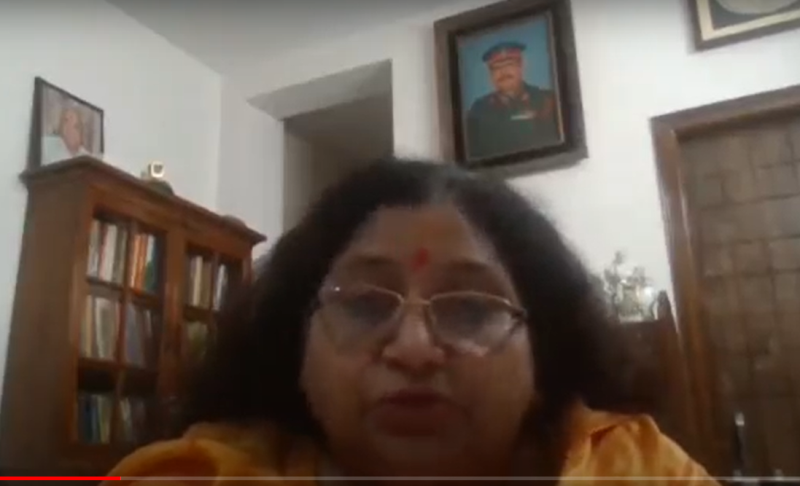
Now, electronic media mostly covers politics. TV news channels want us to watch irrelevant routine activities of politicians, Mr A touching Mr B’s feet, Mr Y going to meet Mr Z. What have people got to do with all these developments? Other than politics, the focus is on celebrities and crime. There is no bulletin in TV news channels. DD still does have bulletins but in private channels, the three segment bulletins have become a thing of the yore. Earlier, if you sat in front of a private channel for half an hour, you would get an idea of what is happening all over the world. But now, even if you sit in front of a news channel for a whole day, you will not be able to know what is happening in the world. Anchors have started behaving like ringmasters. They invite spokespersons of major parties and then start behaving like ringmasters in a circus. The attitude of anchors is an issue of serious concern. I am surprised that all these political people willingly come on shows like these and get humiliated by anchors.
I was with Zee News for 15 years. But I am shocked to see the transformation when it comes to presentation of news. Ethics have also undergone a sea change. The words that we never used are now used with callousness. For example, rapists, thief, murderer etc. We were barred from using such words on air. And in print media, such words were completely banned. Out of 100 news that we see on news channels now, 95 will be on crime. Even in regional papers, such news is restricted to single column items. But news channels that cater to an international audience cover such news which nobody has the patience to sit through. One news item gets stretched to whole day coverage along with discussions and debates. Such news items do not have any basis and are completely against the ethics of journalism. Even the language used is deplorable. Sometimes the TV studio discussions result in fights - sometimes among the panellists and at other times between the anchor and the panellists. Often, anchors are responsible for instigating the panellists with an aim to increase the TRPs. There is no focus on understanding a subject and steering the discussion in the right direction. The party spokespersons keep getting caught in the trap of the anchors and in the process, their image is also getting affected.
There are questions about the credibility of electronic media. We are shown news like Kareena Kapoor is pregnant, Anushka Sharma is pregnant, Taimur ate khichdi, Karan Johar celebrated the birthday of his kids, Rakhi Sawant slapped her boyfriend etc. Now, how does a common person benefit from such news? Who would want to see such news? Earlier, this news would be small bits in film publications but now they have become headlines in electronic media. And it is not limited to just headlines, this news is covered for an entire day with live coverage and discussions. During the time of corona, a film actor’s death was given more importance than the national crisis. The media went crazy covering the incident and running after some actors and models.
On the other hand, if you look at foreign media like CNN, Al Jazeera, news is presented in a subtle manner without creating any ruckus. News is presented keeping its importance intact. But in India, there is a lot of drama like chasing vehicles, climbing atop trees and many other gimmicks are done to make news sensational to the public. Viewers laugh at such antics and never take these channels seriously.
After 2014, Indian media got divided into two opposite camps. The main reason for this is that since India got independence in 1947, the control of the media remained in the hands of the Leftists and Socialists. The situation was such that the newsroom was dominated by Leftists and people with other perspectives were totally marginalised. Increment and promotions were not given to people like us who did not agree to the left’s ideology. But as soon as Narendra Modi became the prime minister, the journalists who were pampered by previous governments with rewards and awards, started getting disturbed and began to abuse the other faction as Modi media, Godi media etc. The other faction also started terming the Leftist media as secular media, left media etc. So, this resulted in a clear division in media. The anchors also started identifying themselves as part of either pro-Modi, or anti-Modi factions. If you watch program of some journalists – you know beforehand that they are going to criticise the Modi government. If you watch programs of other camp, you know that they are going to talk about the policies of the government. This division has adversely affected the credibility of media.
News is no longer seen as news. Ideology has started playing an important part. The Kathua case was given a communal angle and was used to demean Brahmins and was used as a tool against Hindutva. But if the same incident had happened in any of the Congress ruled states, the issue would have never been brought up by any of these channels. Instead of journalists, they have become partisan activists. For example, now a Republic TV reporter goes to cover a Congress party event, he gets beaten up and a Zee News reporter gets beaten up when he goes to cover the farmer protests. A TV 18 reporter was also beaten up recently. And everybody has seen how Rajdeep Sardesai was harassed in the US.
In a democratic nation, press is seen as the fourth estate. But this is no longer the case as the media themselves have broken all rules. Media is no longer a mission and has transformed itself into a business. Big media houses have numerous side businesses because of which their prime concern happens to be growing those businesses. So, their focus is on not upsetting the government. Moreover, the commercialisation of media is the biggest hurdle in media remaining non-partisan. Take the case of Delhi government which gives full page advertisements in newspapers. No newspaper can afford to lose that revenue. So, they will support the government and in instances where they can’t lend their support, they maintain silence. It is a fact that newspapers cannot run without revenue from advertisements.
Apart from all this, there has also been a sprouting up of YouTube channels. Every other person seems to be interested in imparting knowledge. After 2016, some so-called secular journalists started their own news sites with the help of external funding. Some of the examples are - The Wire, The Quint, Newslaundry and The Print. The Wire started with a budget of Rs 1oo crore with the aim of painting this government as communal and also corrupt. For this, they raised questions at every deal that the government negotiated. Earlier nobody gave a counter to these allegations. But then sites like Swarajya, Postcard, OpIndia etc. started countering these stories. Everybody has their own stories and everyone takes one side or the other. If the media houses had presented news in an objective manner, the credibility of news would have remained intact.
In the meantime social media also made a grand entry and people have now become more aware. They have even started trolling the news channels. But even in trolling, there are different factions. It has also come to light that a certain channel, Kissan Channel, that covers the problems of farmers and has a huge following on social media is in fact funded by Khalistanis sitting in Canada and Australia. It is also well known that the opposition supports those who have come forward against the Modi government. There are many people who have come out openly against Modi government and Hindutva. Not just this, pan Islamic, pan Christian organisations as well as foreign media are hand in gloves with these people. A government that came to power with such a huge margin can’t be put down just by few people in India. It is part of an international conspiracy. Some foreign NGOs and foundations which do fake surveys have been spreading lies. For example, Reuters Foundation came out with a survey that the condition of women is getting worse in the country by claiming that women in India are not permitted to use mobile phones. It makes me wonder where did they do the survey and who their sources are. Such surveys are republished by The Wire, The Print etc. and it turns into a vicious circle. The next is the Pegasus story which was brought on the day monsoon session of Parliament began. Nobody produced any proof but still parliamentary proceedings were stalled.
Why are we failing against the spread of this false narrative? It is because a lot of planning has gone into spreading the leftist propaganda and they work in tandem. They are far ahead of the “rightists” in India because they have been around for so long and they have a strong network. But now because of social media, their planted stories are getting exposed. Even the government is forced to change its decision because of social media. Media houses are also in a race to prove each other wrong. The way an incident that takes place in a Congress ruled state is presented in a drastically different way from the manner it is presented if it is in a BJP ruled state. On one hand, they claim that terrorism does not have a religion but if an untoward incident takes place in a BJP ruled state, they are quick to pin the blame on “Saffron goons.” During the time of Gujarat riots of 2002, I was given the responsibility to analyse the footages of NDTV by Dina Nath ji Mishra and Balbir ji Punj for a report they were preparing. You wouldn’t believe the kind of biased reporting that Rajdeep Sardesai and Barkha Dutt did. We called them out by showing their every single footage. Now when we look at YouTube also, there is too much fake news.
I would also like to talk about the social issue that has arisen out of the lack of credibility of social media. Now patients suffering from effects of media have started going to psychiatrists and counsellors. The television in the bedroom is creating wedge between husband and wife. The political differences between couples can even lead to divorce. So, now the counsellors advise them to stop watching news channels. The credibility of media is at an all time low. The way our media reported during Covid-19 crisis led many people into depression and experience psychological effects.
I conclude my talk with these observations.
Dr Kuldeep Ratnoo:
Thank you so much Sarjana ji for your observations. The issue of credibility is troubling the media industry. It is true that today the news channels have transformed into entertainment channels. The lack of news bulletins means that people can no longer know what is going on in the world.
Now I request Ajay ji who has worked with various news channels to talk about the changing nature of journalism. Earlier, a journalist was seen as a social worker, then corporates came into the picture and their influence started becoming visible in the editorial decisions and marketing people became more involved in the editorial process than reporters. Due to this, the image of some of the big media houses have taken a beating. Recently a prominent newspaper was raided by income tax officials as they had ventured into a lot of businesses that had no connection with the media industry. But it was portrayed as an attack on media freedom. The first concern that I would like you to address is the influence of big corporates and the misuse of their power which has affected the credibility of news. The second concern is the sprouting up of individual YouTube channels with the aim of furthering political agenda. The biggest problem before us is the problem of plenty. I request you to address these issues in your talk.
Ajay Setia
Thank you for inviting me to this webinar.
As rightly mentioned by Siddharth ji, every person is a journalist now. Social media has turned everyone into a journalist. In the last 20 years, social media channels like YouTube, Facebook and Twitter have taken control of media all over the world. In India’s case, what went wrong is that we did not formulate any law for media. The country became independent and it was only after a few years that there was a thought process to regulate the print media so as to ensure that nobody is getting blackmailed or getting attacked directly. For this, the Press Council of India was established. Press Council had representatives from journalists, the owners of media houses and two of the representatives were from Parliament. So, an establishment was formed through legal means to regulate print media. But when visual media came into the picture in the 1990s, there were no rules to regulate this new medium. It became unregulated. Later there were a lot of demands that were raised to regulate this sector by bringing the Press Council also under the umbrella of Media Council and formulating a new and larger set of rules that will apply to all forms of media. But that did not happen. Eventually, the electronic media formed their own association and said that the government cannot impose any regulations on them and they will self-regulate. The results of this step are visible now.
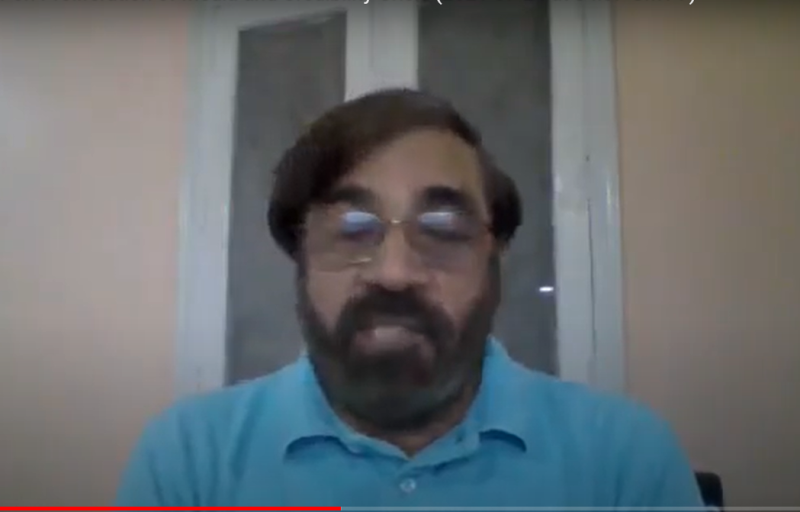
When social media came, the government failed to see that it was being controlled by foreign powers like the US and China. Even small countries like The Netherlands had control over social media. Today, we are at a stage where social media has started having adverse effects on society. From kids to the elderly, people are getting heavily influenced by social media. Recently there was a survey that was conducted to analyse the effects of social media on people. In that 85 per cent of the respondents who were below the age of 18 years said they use smart phones. Out of these 85 per cent, majority admitted to using internet and being on social media for more than five hours a day. The youth were more interested in seeing videos on OTT platforms. There were no efforts being made to educate the population on matters of internet privacy and internet security. Approximately 30 per cent of the respondents admitted that they have accessed sensitive information from the internet. Almost 50 per cent of the respondents said that they have used internet to watch porn videos. This issue concerning the kids are a matter of grave concern for the Indian government. There needs to be a serious discussion on this. We can no longer control the information that kids can gain access to. We have no control to stop the kids from watching obscene videos. The result is that kids are now watching graphic websites, obscene videos and they are sharing these files amongst themselves. This has affected their thought processes.
There is cyber bullying that is being seen on social media and it has also brought about a stark difference to the lifestyles of people. It has resulted in lack of sleep, more people falling into depression etc. How do we put an end to this? We keep subscribing to YouTube channels and the end result is that we keep getting notifications which we often check at night due to lack of time in the daytime. You spend more time on the internet, compromise on your sleep and end up becoming a victim of depression.
Now let us look at news. Anybody can be a journalist now by starting a YouTube channel or pages in other social media sites. People are writing whatever they want to through these different social media outlets. The result is that this has ended the influence of print and visual media. News reaches faster through social media channels now. There are times when you see something on WhatsApp but the visual media reports it only after three hours. The good side is that people have access to information at a much faster pace now. They get to know what is happening across the world. But the negative side is also in front of us. I believe that the Indian government should have thought of regulating these media at least ten years ago. The nation is suffering because of the stand taken by the previous UPA government. The NDA government has also wasted a lot of time in taking this step. The last five years were lost.
There is also the problem of paid news. The one instance I can think of is the Punjab elections which happened 15-20 years ago. During that time, newspapers started selling their space on the basis of per centimetre. At that time, Prabhash Joshi ji started campaigning against this practice. But now media has become unregulated. Earlier, newspaper owners used to control news. In the present times, everybody has access to social media. The raid on Dainik Bhaskar was construed as attack on media. We do need to realise that if we control media, it means controlling democracy. The traditional media no longer have a huge influence on society. Despite that, political leaders do invite them to all their press conferences. We need to keep that tradition alive. But it was wrong to compare what happened with Dainik Bhaskar to other events and reach a conclusion. I have worked with Dainik Bhaskar. I can tell that there are many issues. Newspaper employees are not given PF and the government has never interfered in this because they let the media bosses be powerful. This is applicable to all newspapers. I can give two examples. Take the case of what happened in Rajasthan as the first example. When Dainik Bhaskar entered the market, they spent nearly Rs 10 crore just on advertisements. This money could have been used to come out with at least 2-3 editions. Now they have acquired government land at a nominal cost in various areas of Rajasthan and have started malls. Other than this they have also encroached upon a land belonging to the forest department and is running a school named Sanskar Valley which charges fee in lakhs. So, does it mean if somebody is running a media house, they should be free from the governmental regulations? Dainik Bhaskar is a company that has a turnover of Rs 6000 crore. Its activities are not just limited to newspapers. It makes electricity from coal. They are into coal mining, oil production, textiles, real estate, education etc. From 2010-2015, they had received foreign funding without obtaining the permission of RBI. There have been so many scams. It is wrong to portray this as an attack on media. I can give one more example to bring out the ill effects of social media. There was a news report that Namaz was offered at the Badrinath Dham. This spread like wildfire but it in the end it came to light that it was fake news. Some labourers who were engaged in building a parking lot one km away from Badrinath offered their Namaz at that spot which was still under construction.
It is also a matter of concern that the Indian government had no laws to regulate content on YouTube. Laws have been made now but there is no clarity on who will control the content as the companies are based in foreign nations. The government should have regulated social media the moment it entered the country. Even now there is need for stringent rules and regulations. Until that happens, India will not be able to handle problems created by the misuse of social media and the situation will only worsen. We have been unable to understand social media till now. Spying and data theft have become prevalent now. Data that should have been stored in India is now with Google. Our knowledge is becoming limited. This has happened because we have started posing all our questions to Google. Even schools are not teaching the methods they used to teach some 30-40 years ago which would have helped sharpen mental calculations. Our knowledge of news has also become limited. The news that would feature in headlines in the morning do not even find a mention in the evening. It has started affecting our lives. For this reason, it is necessary to bring stringent rules to regulate media. It is also important for us to stay away from social media and keep a time limit for its usage. Otherwise, social media will have an adverse impact on our families and society.
Thank you!
Q&A session
Dr Kuldeep Ratnoo: Thank you for presenting the topic in such detail. I request the veteran journalists who have joined the program today to share their views.
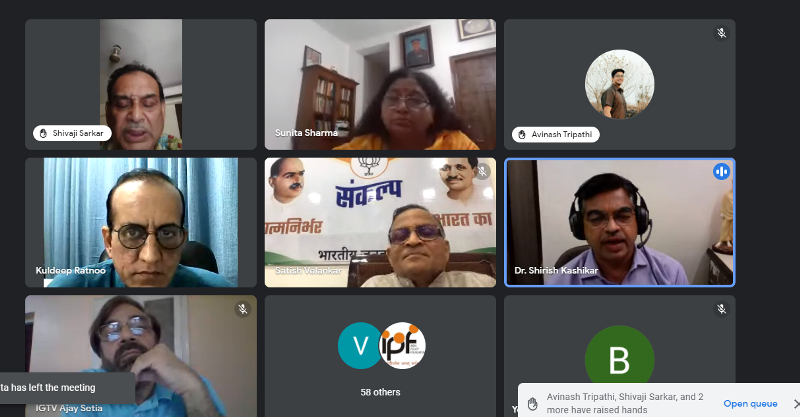
Shivaji Sarkar: The issue of media regulation starts from the ministry. The tendency to over regulate which is seen in the ministry is not good for the media. In 1995, when Sushma ji was the information minister, we had put forth the suggestion to form a media regulator. Sushama ji had almost come on board but there was strong opposition from the Leftists and it did not materialise. Media regulator is functioning well in other countries and it is important to have one. Right now, the only regulator we have is the Press Council of India which covers newspapers. Even if we increase the ambit of Press Council and bring electronic media in its fold, it will address a lot of existing issues. The ministry should never get into this as it would mean the direct involvement of the government.
Dr Shirish Kashikar: A few days ago, the government had released a set of guidelines for digital media and OTT platforms. After this, the government had organised a few programs through PIB. This was also attended by the Secretary who drafted these guidelines. I was also part of that discussion. There the government said that it is not thinking of regulating OTT platforms at this stage and expects the platform to self-regulate. In my opinion, the adult content in those platforms shouldn’t go unregulated. There should be something similar to the Censor Board for OTT platforms. The government has to take the initiative here. Take the case of news channels which said they would self-regulate and formed an Broadcasters’ Guild. But none of the channels are willing to bring in any sort of regulation. Regulation can be brought at every specific level and government should get involved in the process from the very beginning. Otherwise, it will be too late.
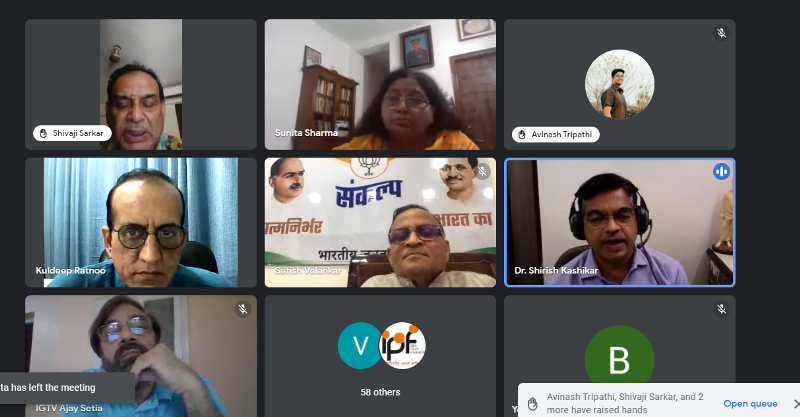
Avinash Tripathi: News media no longer lets out the full information and concentrate only on the specifics. Even the channels that were started for the purpose of fact checking are found to do so with an agenda in mind. Should there not be a discussion on this? Misinformation on OTT platforms is especially dangerous considering that the content can be accessed by kids and they are impressionable.
Pradunmaya Datta: There is no channel that exclusively puts forth the views of the “right wing”. Even when somebody wants to support the government, they do not have access to adequate information. The government websites are not being regularly updated. It can be even more dangerous to trust the government surveys. Just before Assam elections, there was a survey conducted on MUDRA loans and a beneficiary who had applied for a loan of Rs 30 lakh was randomly selected to meet the PM. After the meeting, he went to the Left media and complained about the high interest rate and how the whole process was just a gimmick. When we checked with the local workers there, nobody was even aware of PMO officials visiting the state and selecting beneficiaries. The advantages of social media can be taken only if there is a constant flow of information from the government.
Nagaraj: During the time when newspapers were in wide circulation, we used to read only the news that interested us. Many people used to go directly to the sports page, some people will read only the headlines etc. Likewise, in social media also people have a choice. It has a good side and a bad side. But all the governments have a kumbkarna syndrome. They never take actions in advance. These regulations should have come a decade ago. But even after Modi being in power for seven years, we are still discussing on drafting and implementing regulations. My feeling is that we may need more eye doctors in the future as most people are glued to their phones. India has got tremendous talent. In one of the webinars conducted by IPF in 2019, Shri Rajiv Malhotra had said that our people who go overseas to work in the IT industry are just like brick layers, they don’t do anything innovative. For example, YouTube which I consider to be one of the most important tools which have been given to mankind in the recent decades, had a Bangladeshi in its founding team but not an Indian. TikTok became famous in India but nobody in India attempted to create a tool like that. As one famous Indian industrialist said, data is going to be the new oil. Regulation is needed but we don’t have to fear too much. Political content has to be regulated.
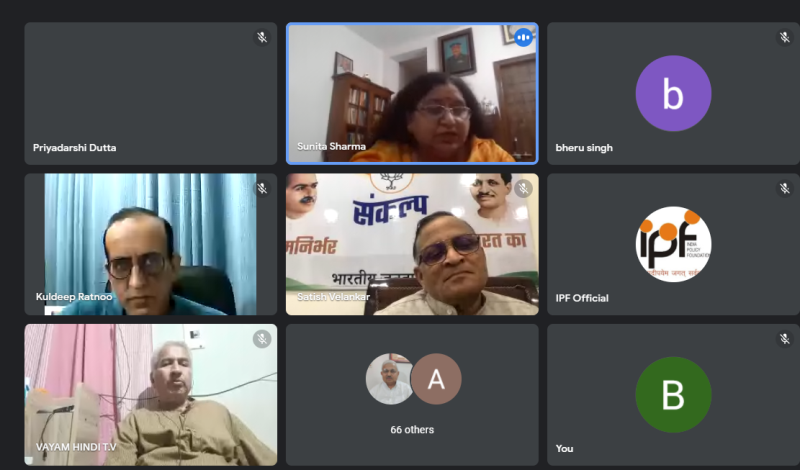
Divyam Chaturvedi: What is the alternative to subscription models?
Dr Kuldeep Ratnoo: The readers are also consumers and there is a cost to services. There needs to be a platform for service providers and consumers. In this case, there has to be a platform for news media and readers to voice their grievances and ensure the quality of content. The readers are paying for the service, so it is their right to get good quality content. The content has to cater to all age groups and efforts should be made to categorise content. YouTube has a lot of individuals who have millions of followers who put out content with no check. Government will not be able to regulate so many people. As consumers, we will have to take initiative to create forums so that content can be tracked and it will be easier to identify where the fault lies. And then the government or the judiciary can take up the issue as deemed appropriate.
Satish Velankar: There has to be a comprehensive view. The issue is not just limited to the government and its policies. This discussion has to be taken up again to cover more aspects and the suggestions put forth here should also be followed up.
Gopal Parihar: Why are there no stringent rules to check fake news? Should TV channels be giving out strategic information when they are covering defence? How can this be regulated? What mechanisms can be there to ensure safety of children in the digital age?
Sarjana Sharma: PIB has started a department called Fact Check to counter fake news. So, the government has a full-fledged department for this. Some of the media channels have also started segments to counter fake news.
The way media exposes strategic moves of forces when it covers defence is deplorable. Ministry of Defence should come out with a set of guidelines for this. The live coverage during the Mumbai attacks had helped the terrorists in a big way. Their Pakistani handlers were able to give them clear instructions about what to do as they knew the moves of the NSG commandoes. Barkha Dutt had done something similar in Kargil too. You cannot put national security at stake for TRPs or breaking news. An association can be formed and a memorandum should be given to the government to ban such media coverage. Limitations should also be set for reporters who are covering defence.
YouTube keeps pushing content that are not child friendly. So. we should make it a point to not have anything on our search history which can’t be viewed by kids. Once we set our preferences, YouTube will only show content based on our interests.
Questions: How effective has been the performance of Press Council of India? Is there a need to control foreign funding in social media? How do we make TRP seeking news accountable?
Sarjana Sharma: Press Council of India is a toothless tiger. It does not have any rights. The maximum it can do is send a notice. Either the rights of PCI should be increased in a legal manner and the whole media including the electronic media should be brought under its ambit.
As far as control of funding is concerned, either we have to be strict like China and use only indigenous platforms or we have to go for a complete policy change.
TRPs are no longer coming as it was banned after the Arnab Goswami incident. The news channels and TRPs have a nexus. Take the case of News Nation which was a channel started on a small budget. But within a year, it crossed DD which has a huge network. We need to ask how could that be possible? Doordarshan and AIR have centres all over the country. DD has a huge budget. Even with such a huge network, why has the I&B ministry not been able to bring DD at par with these small channels? I&B ministry should come out with a white paper on this. The officials should be made answerable as to why the quality of content is suffering despite such a huge budget. When I was with Zee news, we had a shoestring budget and we were a team of three, yet the TRPs used to reach 60. If DD does its job well and utilises its funds in the right manner, no private channel will be able to compete with it. Credibility of news will be maintained. The race for TRPs is also a major reason why DD got left behind.
Once I asked a PIB officer the reason why DD is so far behind. He said this is because of the vested interests of politicians. Those politicians who have black money invested in private channels, they don’t want DD to forge ahead. The officer said that this has been the case from 1990s from the time NDTV started and the downfall of DD had begun. The politicians and the government should start using DD to put forth their views and not run behind private channels to air their bytes. The in-charge of every DD station should be made accountable and answerable for its reach.
Dr Kuldeep Ratnoo: Consumption of news has increased in the present times. People will only choose good quality content. A suggestion has come to rate the online channels. But considering that it is controlled by foreign platforms, it may not be practically possible. What we can do is ensure the quality of content from an individual level and to make people aware of what is right and what is wrong. Fact checking should happen at every stage. People should be able to call out fake news. There should be a national readers’ and viewers’ forum which should be able to exert pressure on the government so that laws will be made. Solutions to all the problems lie in heightened awareness and initiating a debate on the seriousness of the issue at hand.
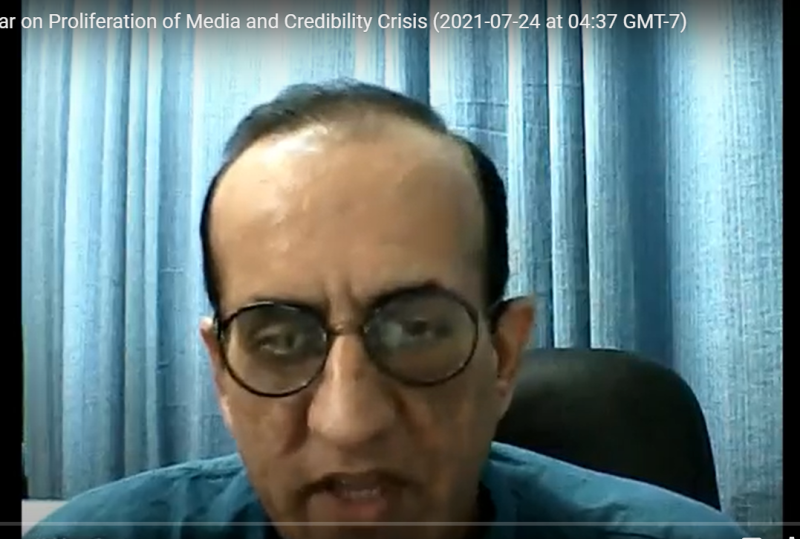
Thank you everyone for taking the time out and participating in the event!
***